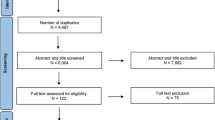Abstract
The biological reasons for ageing are now well known, so it is no longer an unsolved problem in biology. Furthermore, there is only one science of ageing, which is continually advancing. The significance and importance of the mutations that lengthen the lifespan of invertebrates can be assessed only in relationship to previous well-established studies of ageing. The mutant strains of model organisms that increase longevity have altered nutrient signalling pathways similar to the effects of dietary restriction, and so it is likely that there is a shift in the trade-off between reproduction and maintenance of the soma. To believe that the isolation and characterisation of a few invertebrate mutations (as well as those in yeast) will “galvanise” the field and provide new insights into human ageing is an extreme point of view which does not recognize the huge progress in ageing research that has been made in the last 50 years or so.
Similar content being viewed by others
References
Chen J, Senturk D, Wang JL, Müller HG, Carey JR, Caswell H, Caswell-Chen EP (2007) A demographic analysis of the fitness cost of extended longevity in Caenorhabditis elegans. J Gerontol Bio Sci 62A:126–135
Curran SP, Ruvkan G (2007) Lifespan regulation by evolutionarily conserved genes essential for viability. PLoS Genet 3:e56
Economos AC, Lints FA (1985) Growth rate, life span in Drosophila. V. The effect of prolongation of the period of growth on the total duration of life (J.H. Northrop, 1917). revisited. Mech Ageing Develop 33:103–113
Economos AC, Lints FA (1986) Developmental temperature and lifespan in Drosophila melanogaster. I. Constant developmental temperature: evidence for physiological adaptation in a wide temperature range. Gerontol 32:18–27
Everitt AV, Rattan SIS, Le Couteur DG, de Cabo C (eds) (2010) Calorie restriction, aging and longevity. Springer, New York
Finch CE (2009) Update on slow aging and negligible senescence–a mini-review. Gerontology 55:307–313
Fontana L, Partridge L, Longo VD (2010) Extending healthy life span–from yeast to humans. Science 328:321–326
Friedman DB, Johnson TE (1988) A mutation in the age-1 gene in Caenorhabditis elegans lengthens life and reduces hermaphrodite fertility. Genetics 118:75–86
Hayflick L (2007) Biological aging is no longer an unsolved problem. Ann NY Acad Sci 1100:1–13
Hipkiss A (2008) Energy metabolism, altered proteins, sirtuins and ageing: converging mechanisms? Biogerontology 9:49–55
Holliday R (1989) Food, reproduction and longevity: is the extended lifespan of calorie-restricted animals an evolutionary adaptation? BioEssays 10:125–127
Holliday R (1995) Understanding ageing. Cambridge University Press, Cambridge
Holliday R (2006) Aging is no longer an unsolved problem in biology. Ann NY Acad Sci 1067:1–9
Ishii N, Suzuki N, Hartman PS, Suzuki K (1994) The effects of temperature on the longevity of a radiation-sensitive mutant rad-8 of the nematode Caenorhabditis elegans. J Gerontol 49:B117–B120
Johnson TE (1990) Increased life-span of age-1 mutants in Caenorhabditis elegans and lower Gompertz rate of aging. Science 249:908–912
Kenyon CJ (2010) The genetics of ageing. Nature 464:504–512
Kirkwood TBL (2005) Understanding the odd science of aging. Cell 120:437–447
Kirkwood TB, Shanley DP (2005) Food restricticon, evolution and ageing. Mech Ageing Dev 126:1011–1016
Le Bourg E, Rattan SIS (2006) Special issue: can dietary restriction increase longevity in all species, particularly in human beings? Introduction to a debate among experts. Biogerontology 7:123–125
Longo VD (2009) Linking sirtuins, IGF-I signaling, and starvation. Exp Gerontol 44:70–74
Luckinbill LS (1998) Selection for longevity confers resistance to low-temperature stress in Drosophila melanogster. J Gerontol Biol Sci 53A:B147–B153
Norry FM, Loeschcke V (2002) Temperature-induced shifts in associations of longevity with body size in Drosophila melanogster. Evolution 56:299–306
North BJ, Sinclair DA (2007) Sirtuins: a conserved key unlocking AceCS activity. Trends Biochem Sci 32:1–4
Olsen A, Vantipalli MC, Lithgow GJ (2006) Checkpoint proteins control survival of the postmitotic cells in Caenorhabditis elegans. Science 312:1381–1385
Olshansky SJ, Rattan SIS (2005) At the heart of aging: is it metabolic rate or stability? Biogerontology 6:291–295
Panowski SH, Wolff S, Aguilaniu H, Durieux J, Dillin A (2007) PHA-4/Foxa mediates diet-restriction-induced longevity of C. elegans. Nature 447:550–555
Partridge L (2010) The new biology of ageing. Philos Trans R Soc Lond B Biol Sci 365:147–154
Rattan SIS (2005) Anti-ageing strategies: prevention or therapy? EMBO Reports 6:S25–S29
Rattan SIS (2006) Theories of biological aging: genes, proteins and free radicals. Free Rad Res 40:1230–1238
Rattan SIS (2007) Homeostasis, homeodynamics, and aging. In: Birren J (ed) Encyclopedia of gerontology. Elsevier Inc, UK, pp 696–699
Rattan SIS (2008a) Hormesis in aging. Ageing Res Rev 7:63–78
Rattan SIS (2008b) Increased molecular damage and heterogeneity as the basis of aging. Biol Chem 389:267–272
Rattan SIS, Singh R (2009) Gene therapy in aging. Gene Ther 16:3–9
Rincon M, Muzumdar R, Altmon G, Barzilai N (2004) The paradox of the insulin/IGF-1 signaling pathway in longevity. Mech Age Dev 125:397–403
Rose MR (1991) Evolutionary biology of aging. Oxford University Press, New York
Schriner SE, Linford NJ (2006) Extension of mouse lifespan by overexpression of catalase. Age 28:209–218
Shanley DP, Kirkwood TB (2006) Caloric restriction does not enhance longevity in all species and is unlikely to do so in humans. Biogerontology 7:165–168
Turturro A, Hart RW (1991) Longevity assurance mechanisms and calorie restriction. Ann NY Acad Sci 621:363–372
Unger RH (2006) Klotho-induced insulin resistance: a blessing in disguise? Nat Med 12:56–57
Van Voorhies WA, Curtsinger JW, Rose MR (2006) Do longevity mutants always show trade-offs? Exp Gerontol 41:1055–1058
Vijg J, Campisi J (2008) Puzzles, promises and a cure for ageing. Nature 454:1065–1071
Yashin AI, De Benedictis G et al (2000) Genes and longevity: lessons from studies of centenarians. J Gerontol Biol Sci 55A:B319–B328
Author information
Authors and Affiliations
Corresponding author
Rights and permissions
About this article
Cite this article
Holliday, R., Rattan, S.I.S. Longevity mutants do not establish any “new science” of ageing. Biogerontology 11, 507–511 (2010). https://doi.org/10.1007/s10522-010-9288-1
Received:
Accepted:
Published:
Issue Date:
DOI: https://doi.org/10.1007/s10522-010-9288-1




